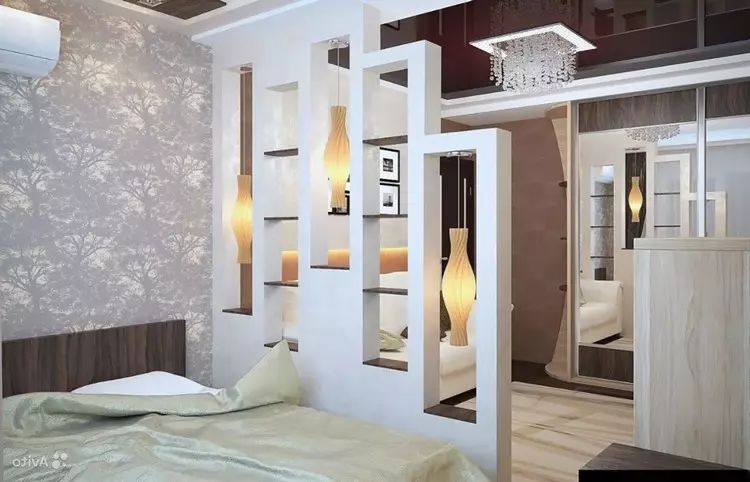
There are at home whose area is really quite large, or vice versa - critically small. In both cases, a partition remains an interesting solution to zoning such premises, which will help visually and conditionally divide the space into separate comfortable zones. If you never dock with this question - now let's try to find out interesting details and the overall picture of this process.
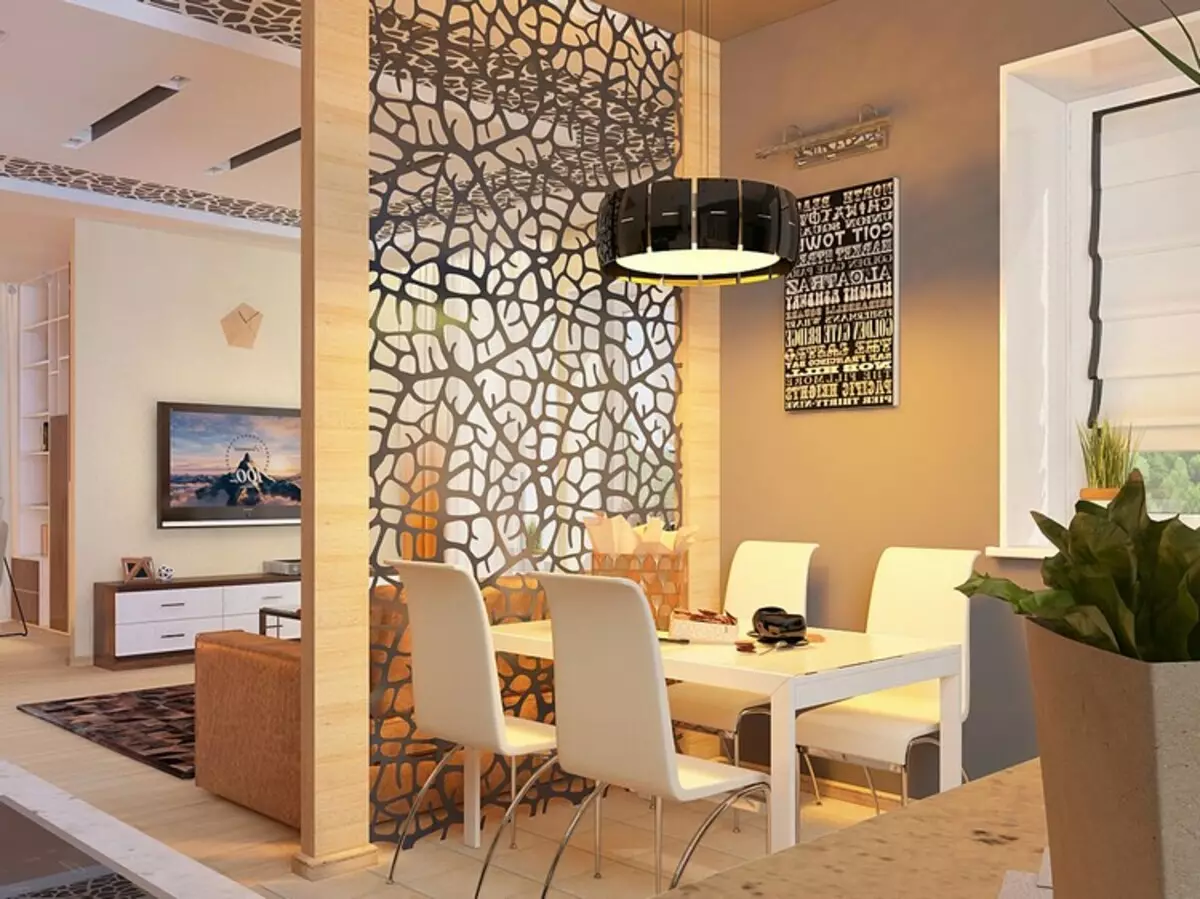
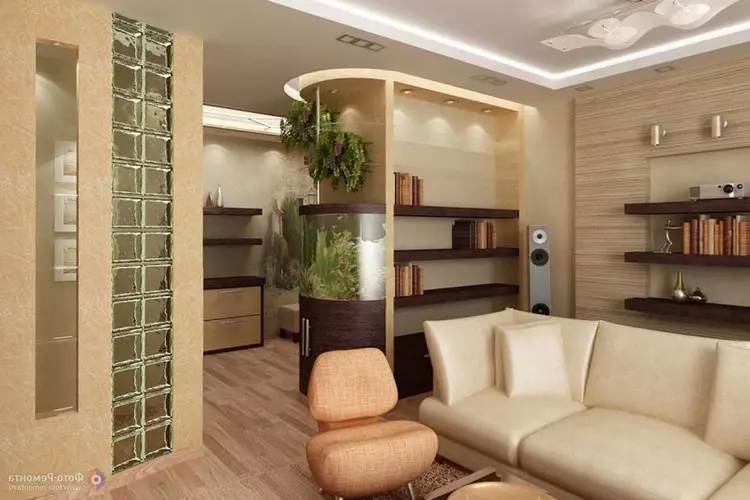
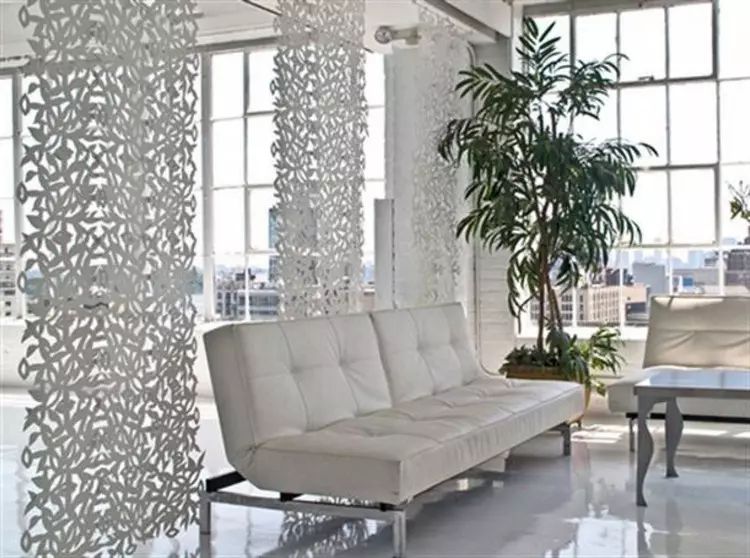
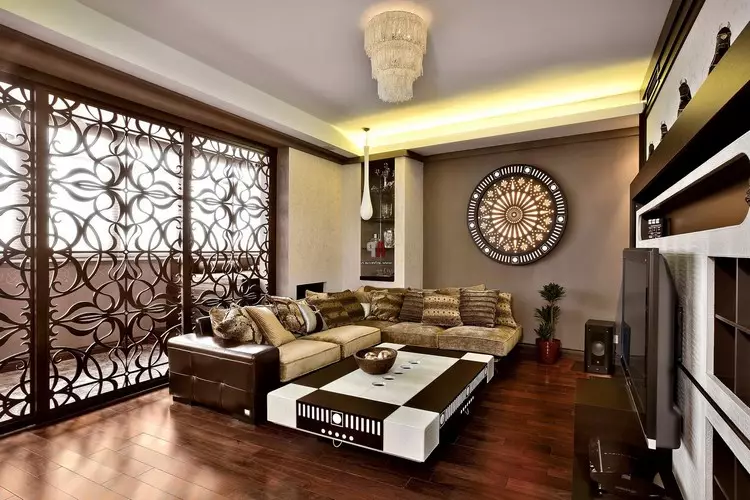
What is the partition and why is it needed?
If you say briefly, this is a conditional light wall that shares the rooms into separate zones. It is usually a width of 5 to 15 centimeters, height and length depends on the ideas and project project. You can make a partition according to the initial plans of construction, in the process of repair or redevelopment.
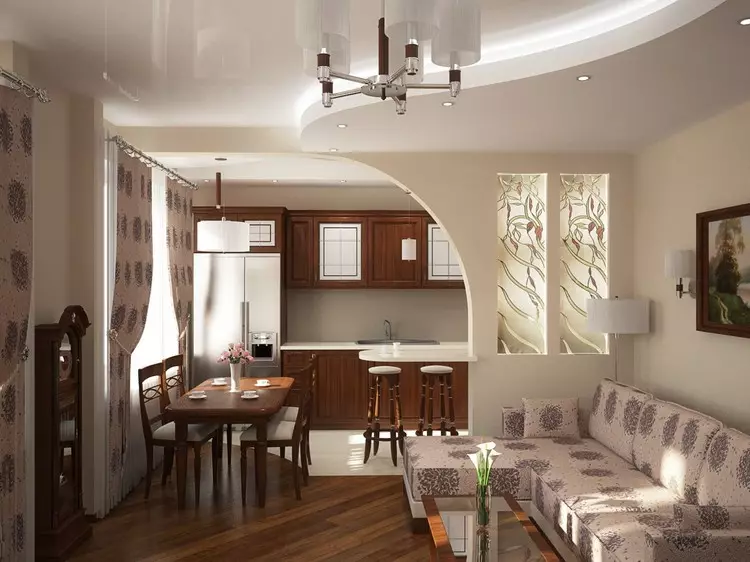
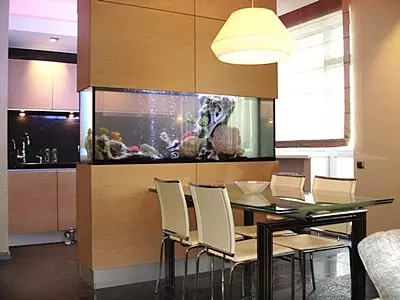
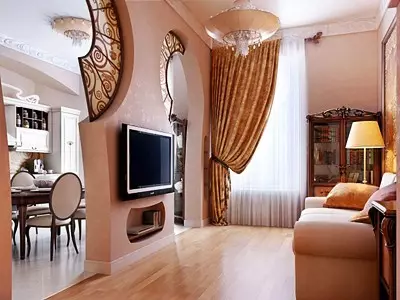
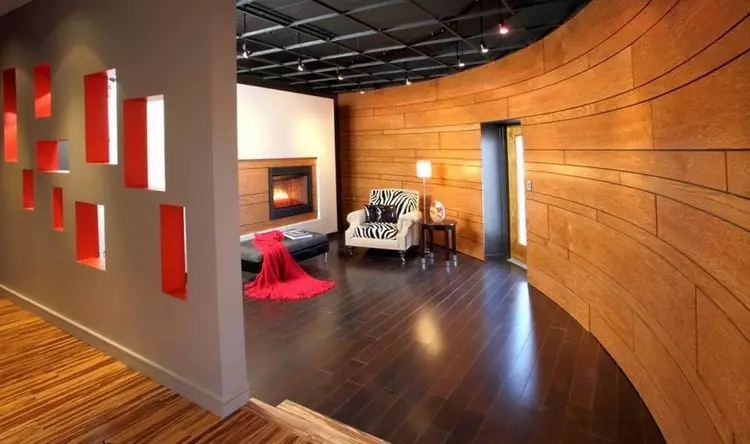
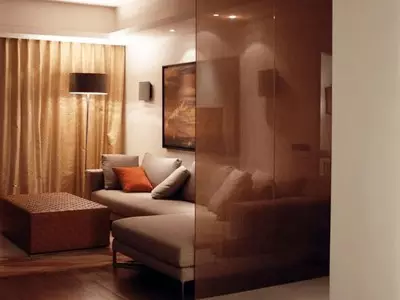
In order to establish such a partition, it will not be necessary to remove the walls or surfaces.
To dismantle only a part of the floor, where it will be.
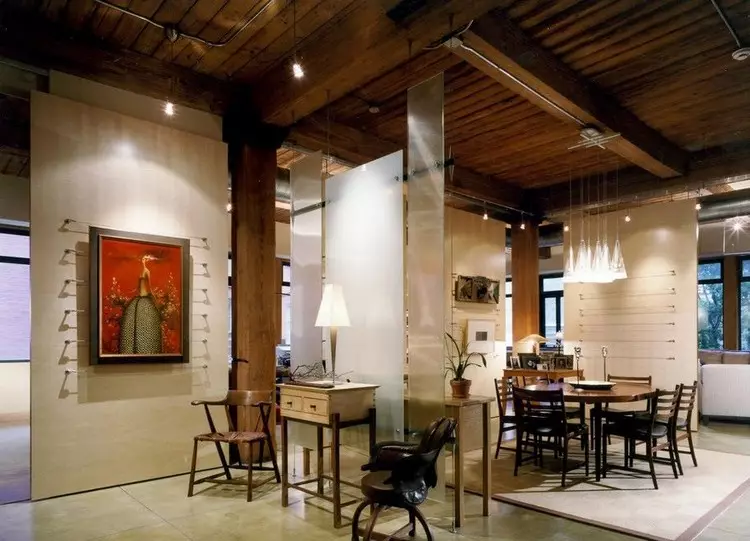
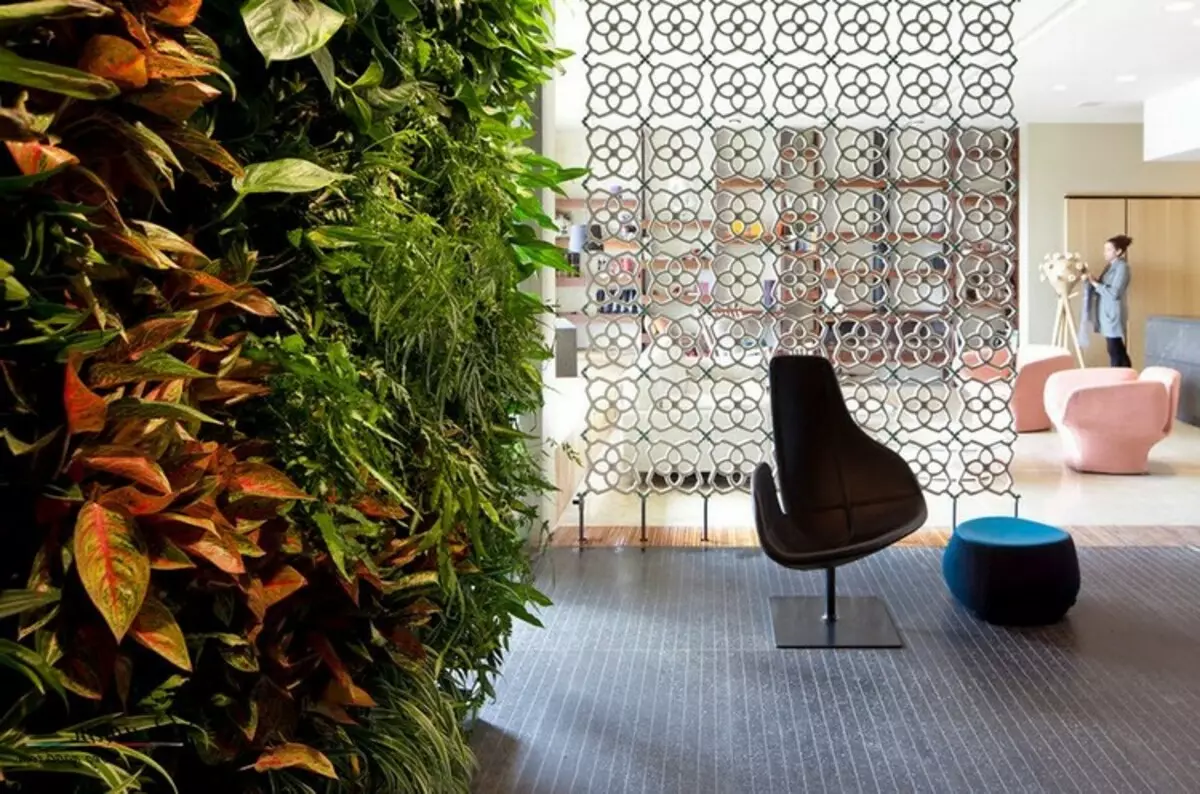
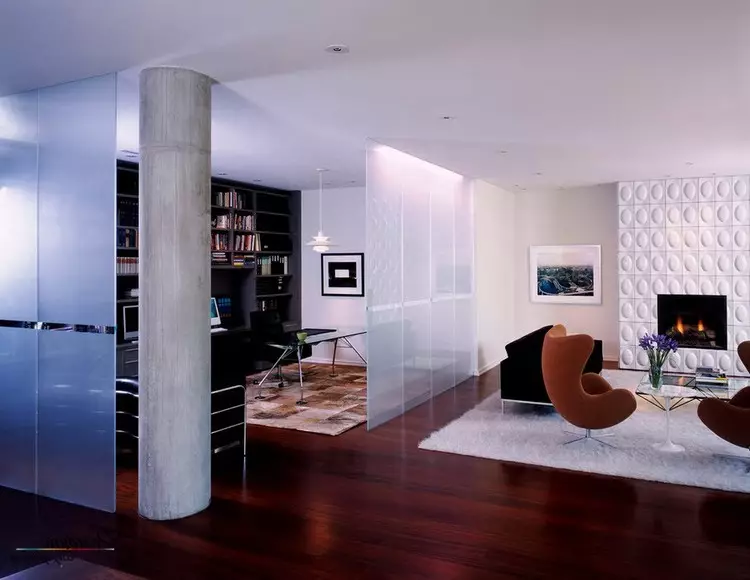
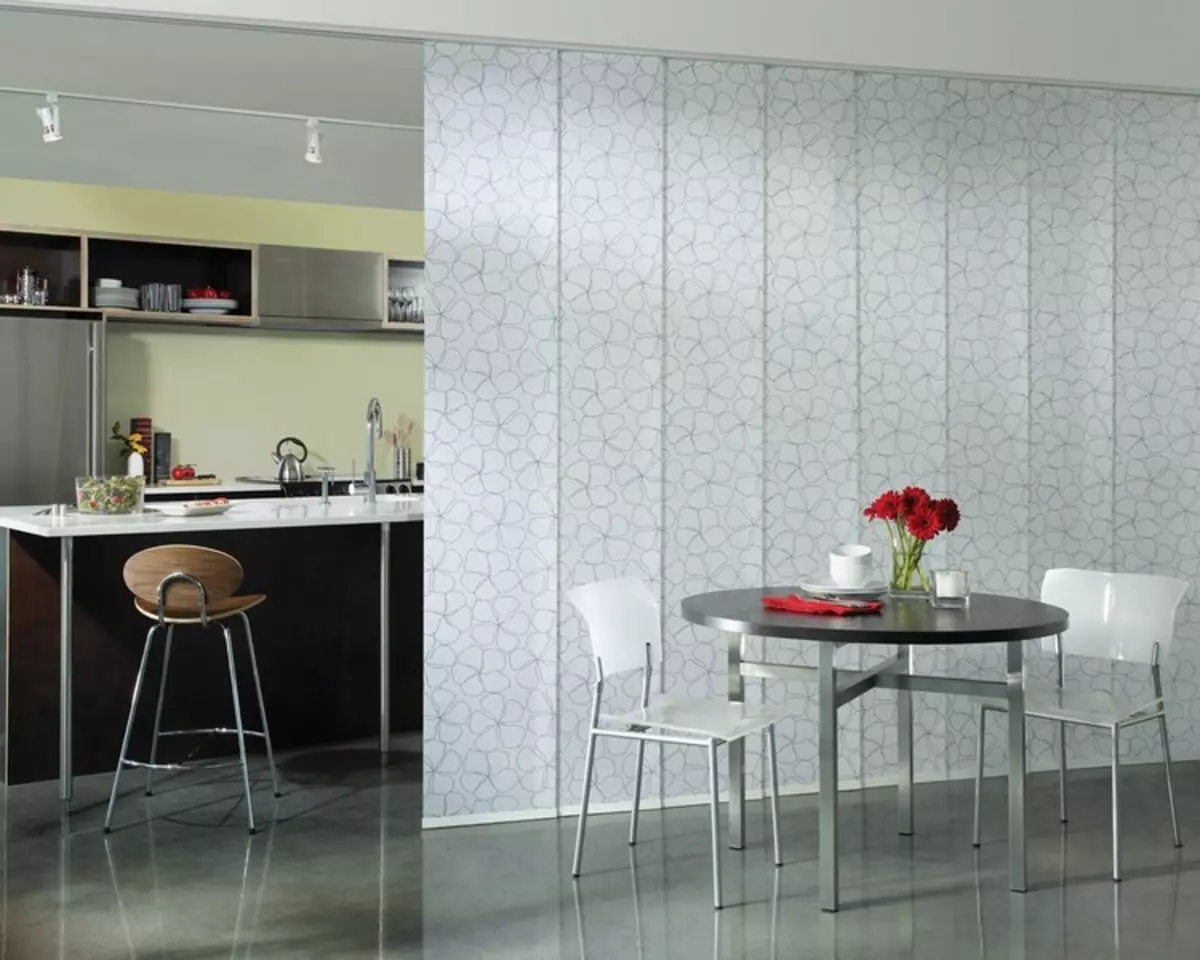
It is important to imagine what exactly you wish the partition, because it can be different in height (from the floor to the ceiling, up to the middle, etc.), in width and length.
Thanks to additional efforts and designer approach, it can become a rather interesting solution in the overall interior of the house. You can decorate it with a facing material, or ordinary paint, giving it a certain focus on the zoning of the room, at the same time make it so that it is not thrown into the eyes and combined with everything else.
Types of interior partitions
Depending on what function, except the main, will carry the idea with a partition, shared such types:
- Stationary.
- Plasterboard.
- Glass.
- Gypsumoblock partitions.
- Wooden.
- Sliding.
- Transformable.
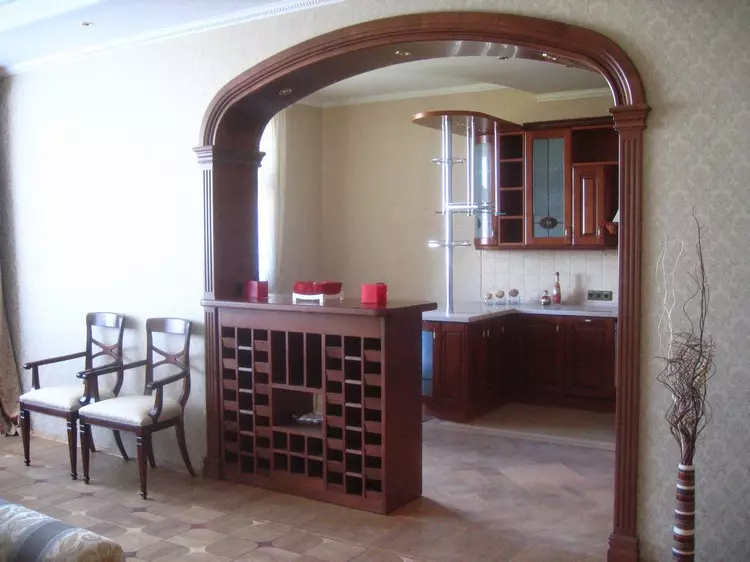
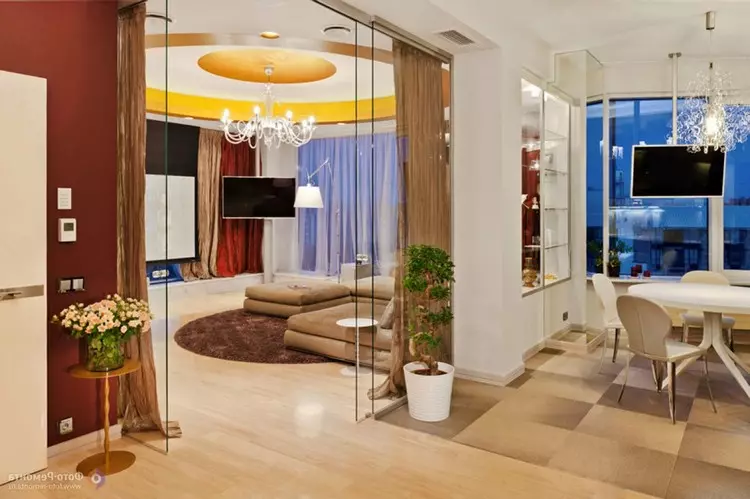
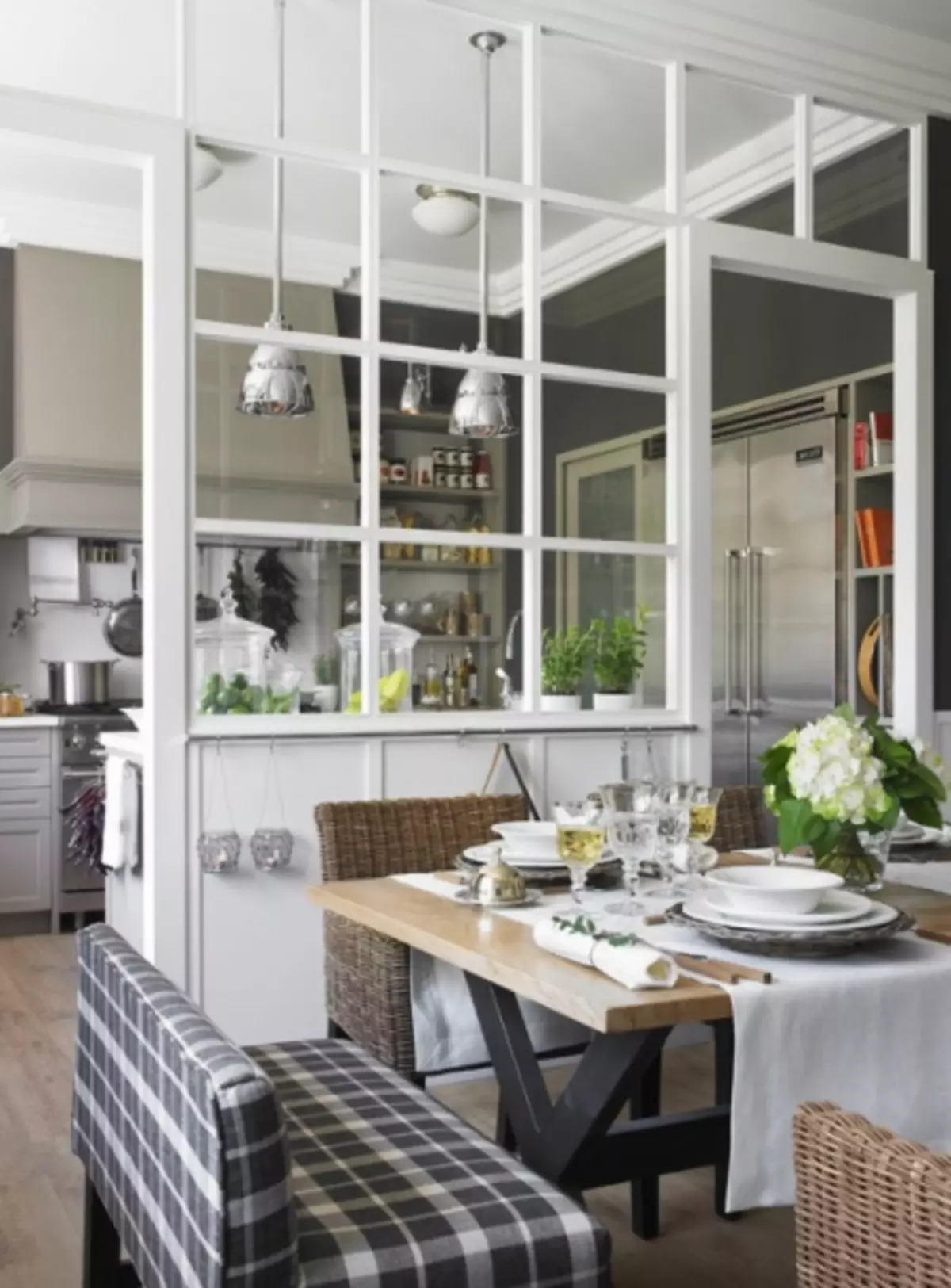
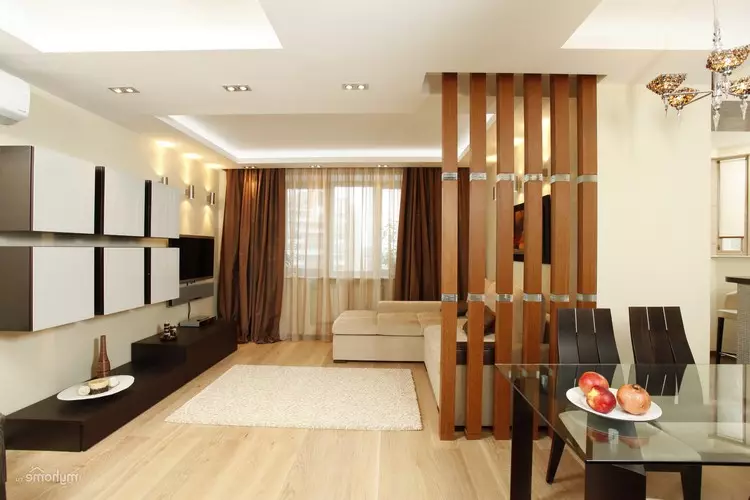
And now more about each of them.
Stationary partition in the interior
This is a classic type of partition, which is often used in the separation of the room. This type of partition is the easiest way to give any shape that you need it to be combined with a common interior in the house. Often they are waterproof, have excellent sound insulation, strong enough and durable.
Article on the topic: How to finish the doors with MDF panels do it yourself
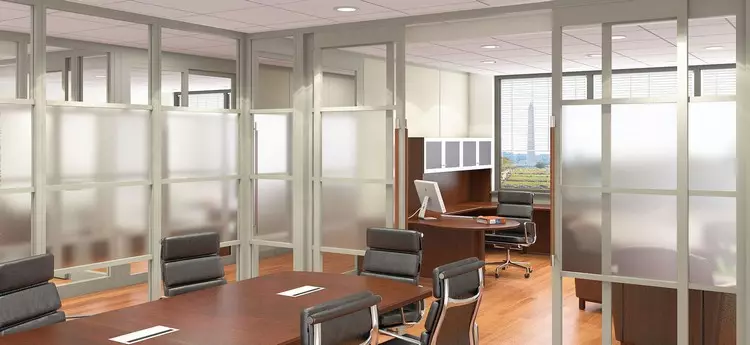
Made from materials such as brick, wood, stone, glass blocks. But nevertheless, the priority will be the brick, especially if in the future to this partition you plan to suspend the locker, or shelf.
The minus will be that this option will be sufficiently heavy in terms of the weight category.
Plasterboard partitions in the interior
It is the most common sheets of drywall, which are mounted in the septum using a metal frame. Simply simple and fast in the mount, so they will become an excellent option for repairing "on the ambulance hand." The big plus will be the factor that the structure itself is little weighs, has sound insulation and does not significantly reduce the area in principle. Additionally, the surface is almost perfectly smooth, and it is possible to install hidden wiring.
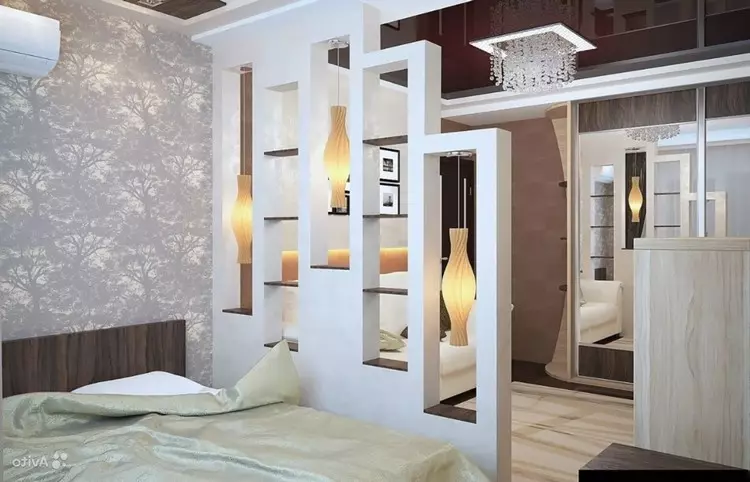
The nuances will be insufficient moisture resistance and strength of the material in the sense that it is impossible to additionally hang the shelves or something like that.
Glass partition in the interior
At the present moment, these partitions acquire the greatest popularity among the population. Most likely, this statistics are related to the fact that the glass option creates some openness and the partition does not look so strictly.
For such a type of partitions, special impact-resistant powerful glass is made, which consists of tempered glass, the thickness of which can reach 12 millimeters.
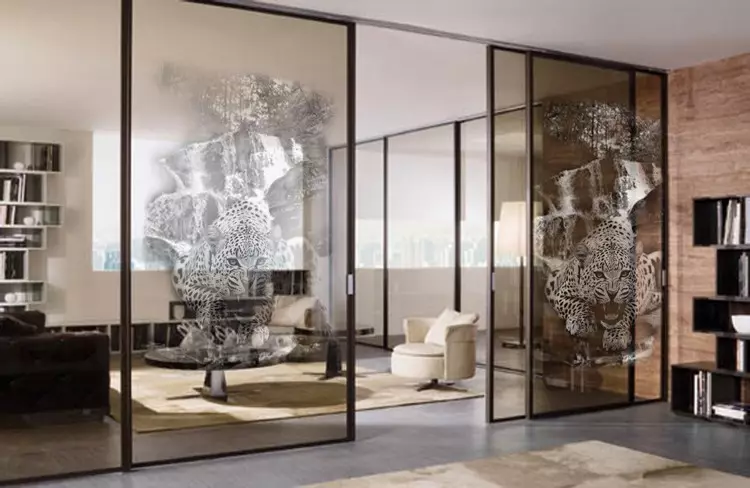
Depending on the taste and the main idea, you can choose a matte or transparent option. In form, there is also no limits - round, square, bent, rectangular or curvilinear. What choose themselves, such and will be!
The main advantages of the glass partition will be excellent light, fire resistance and durability, beautiful appearance and light care. A minus in this case is the lack of opportunity to hang or attach something. On the other hand, the smaller the extra details in the house - the easier it is to live, as they say "according to Feng-Shui".
Glass-block partitions in the interior
How she looks like? By the way, it is quite interesting! It consists of glass bricks, which are made of thick glass, and have a thickness of 6 to 10 millimeters. There are with a different surface, namely: corrugated, matte, transparent, smooth and even color. On the surface, on request, you can order an additional small pattern of stained glass. With this type of partition, you can freely lay out any panel and image.
Article on the topic: Curtains in the style of Patchwork do it yourself
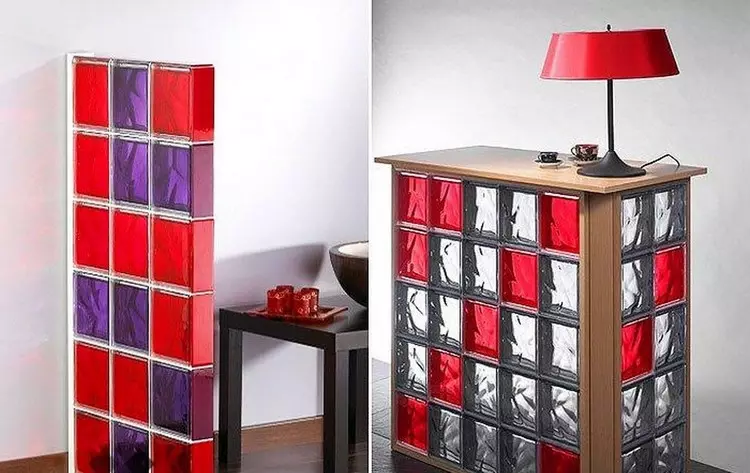
Such a partition looks quite effectively, so your guests will not be accurately passing by. In addition, they are strong enough, steady and fire-resistant. Can safely carry the drops of temperatures, there is an effect of sound insulation.
A certain defect, if so to speak, will be a lack of opportunity to make communication inside such a wall, as well as nuances when installing, because glass blocks cannot be folded in pieces, but you can install half-block.
Wooden partitions in the interior
There are solid wooden partitions (ordinary and double), double with air or filled gap and frame-clay. Of course, one of the main advantages of this option will be naturalness and environmental friendliness.
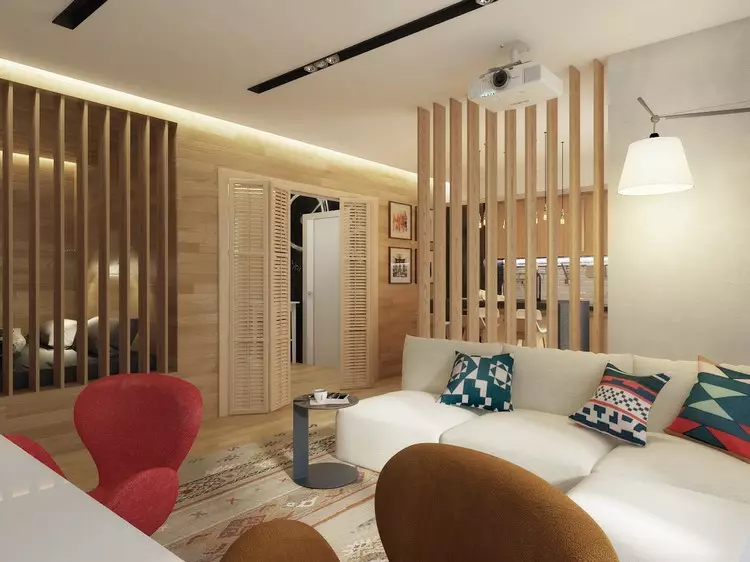
It will also be strong and stable enough, withstands the weight of up to 150 kilograms.
From the nuances, it can be noted that the tree does not tolerate water, you need a special care. Also, fire hazardous in everyday life and have not very good sound insulation.
Sliding partitions in the interior
Enjoy a very good success among consumers. It will be a great option of saving area in the house, and you can also expand the space of the room.
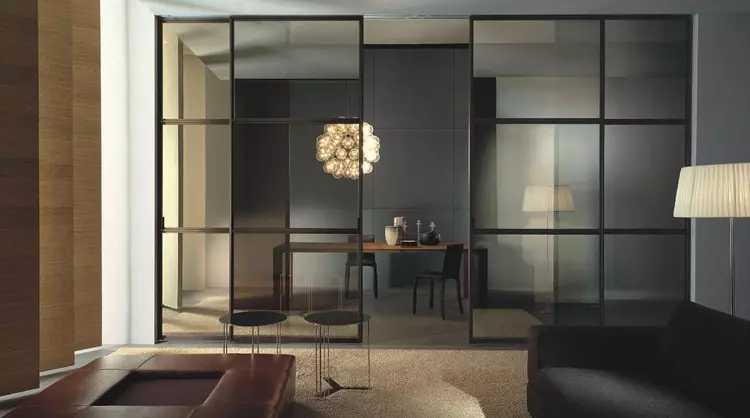
There is a single and two-brass type of partitions. The first look will be easier to install, and it is perfect for the surface where parquet or tile. But the partition will be less reliable and stable, so it is worth thinking about installing a two-terminal option.
Transformable partitions in the interior
It will be well solved by the problem of those rooms where a very small area, so it must be broken into zones. They represent such partitions by themselves something mean between the conventional wall and the screen, which shares the room into two parts.
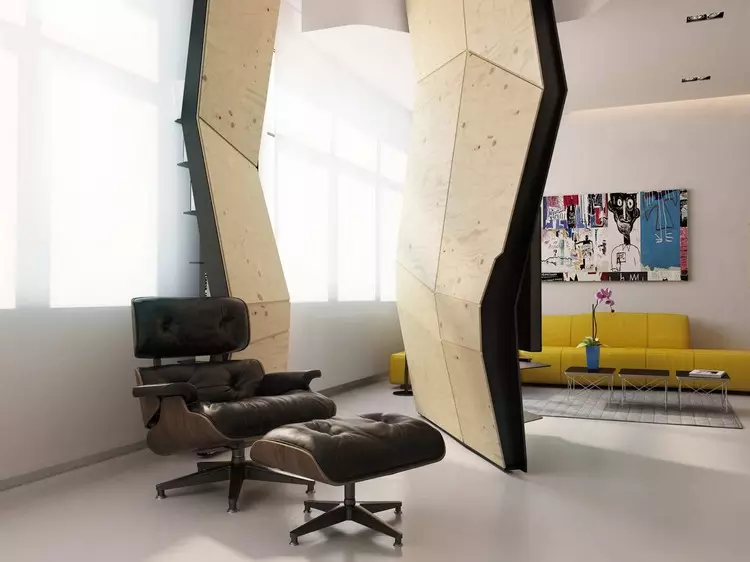
There are two partitions in this form: folding and sliding. For home, it is best to take the option of the folding partition, because it is quite easy to operate, and it looks quite attractive. Sliding partitions are more often installed in office space. In total, both partitions can be with a frame and without.
Materials for interroom partitions
It is very important to choose the right material, taking into account everything for and against. What are the types of materials:
- Brick. The traditional most popular type of material for the partition. The advantage will be available financially, easy in operation and directly in the device itself. Cons - difficult to dismantle, a lot of garbage when working. If the room is not very large, such a partition may look dimensively and ugly.
- Glass. Material that has high quality and fairly high aesthetic characteristics. Pros: Visually design will seem easier, matte glass will hide the main picture behind the wall, will be visible only silhouettes. Cons: constant care and surface cleaning.
- Wood. It will be suitable in any style of the interior, it will look beautiful and elegant. The benefits will be a large selection of tree breeds, quality and aesthetics. Nuances: Requires permanent quality care, otherwise insects can start, or the tree can give cracks.
- Forging. Forged partitions are made of metal, according to any ideas and drawing. Advantages: You can create a unique interior style to which all your guests will envy. Nuances: Again, it is necessary to carefully care, and be careful with the very idea of the forged partition in the way so that it does not look rude and inappropriate.
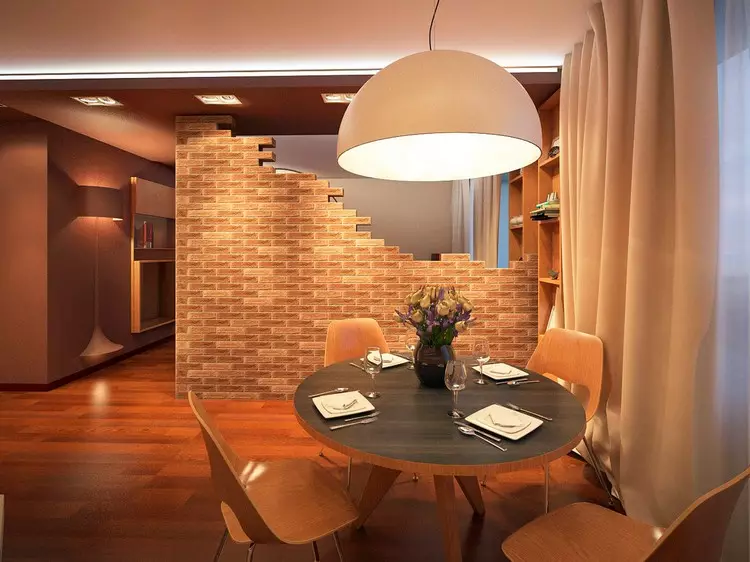
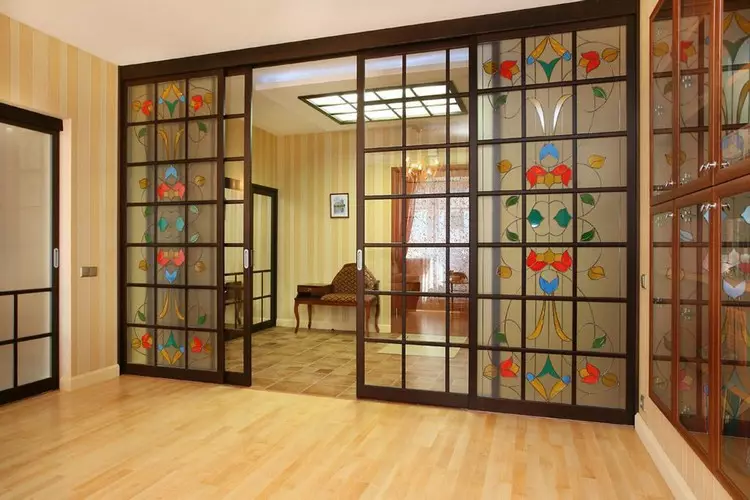
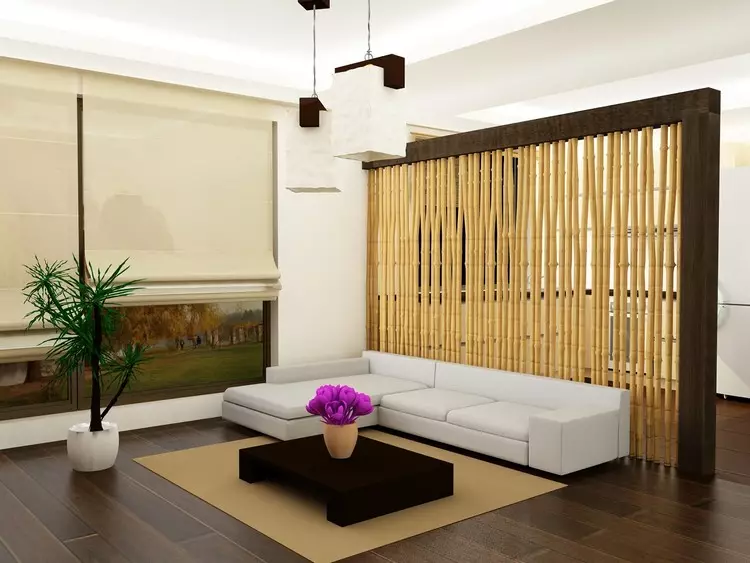
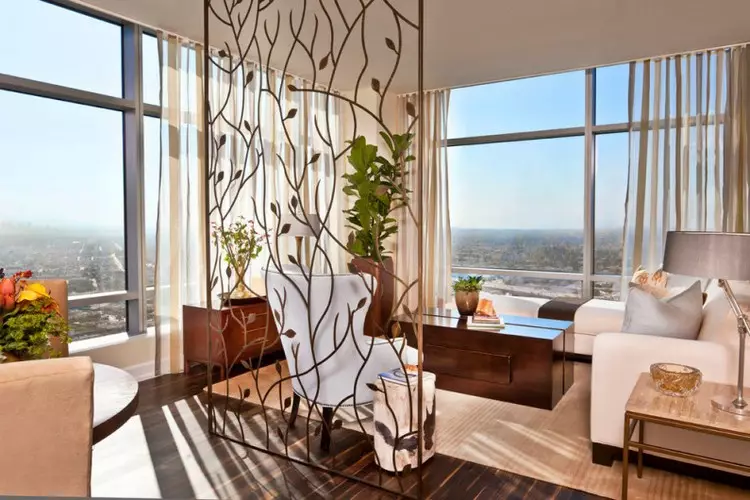
Function Function and Installation Room
The main features of the partition installation will be:
- The zoning of the functional room into several separate zones for a comfortable stay in each of them.
- Protection in terms of isolation of one room zone from another, for example, from light, noise, etc.
- Visual separation of each of the zones.
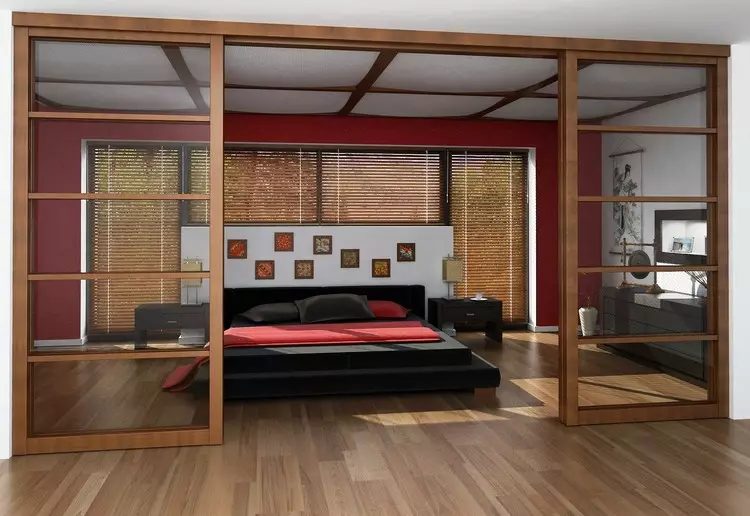
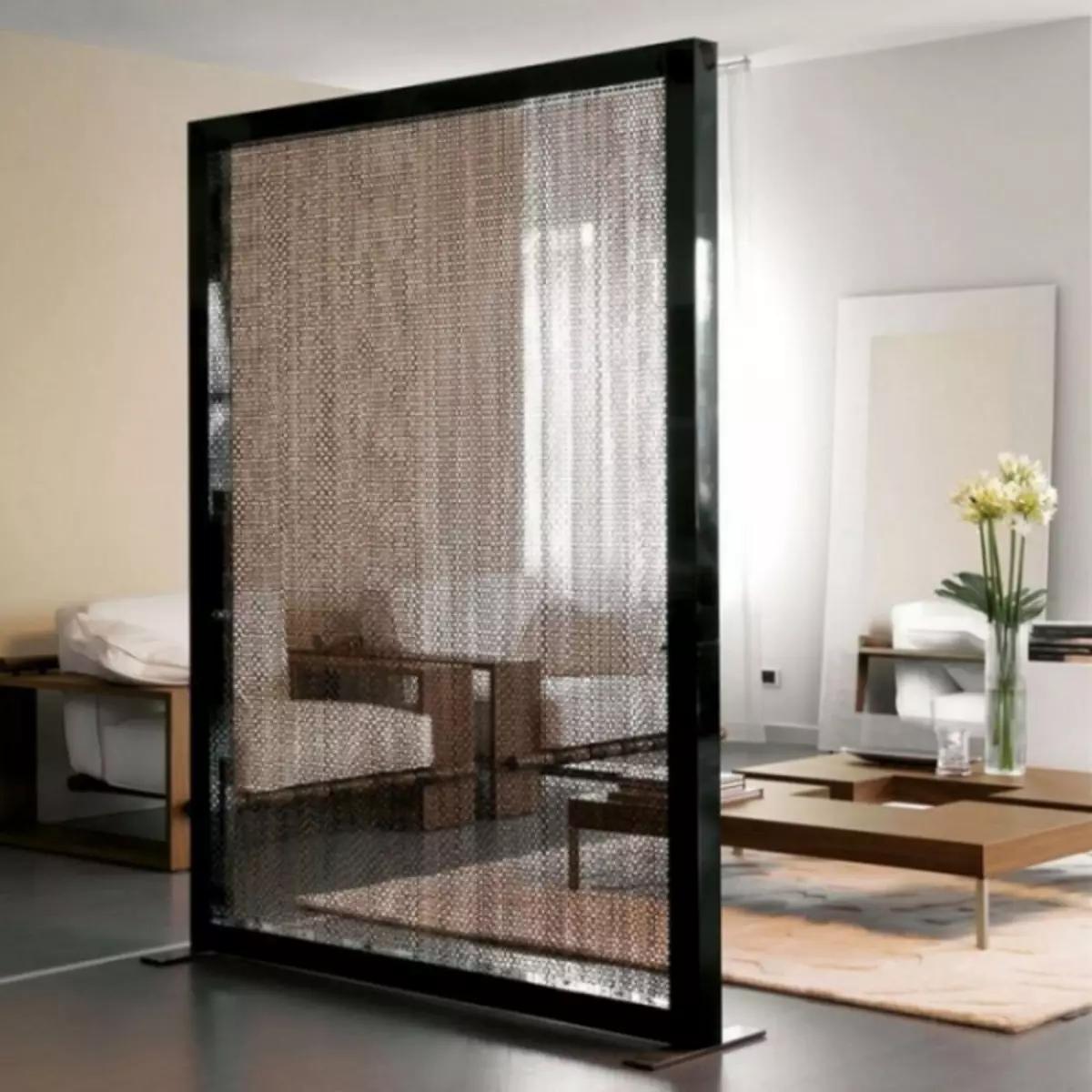
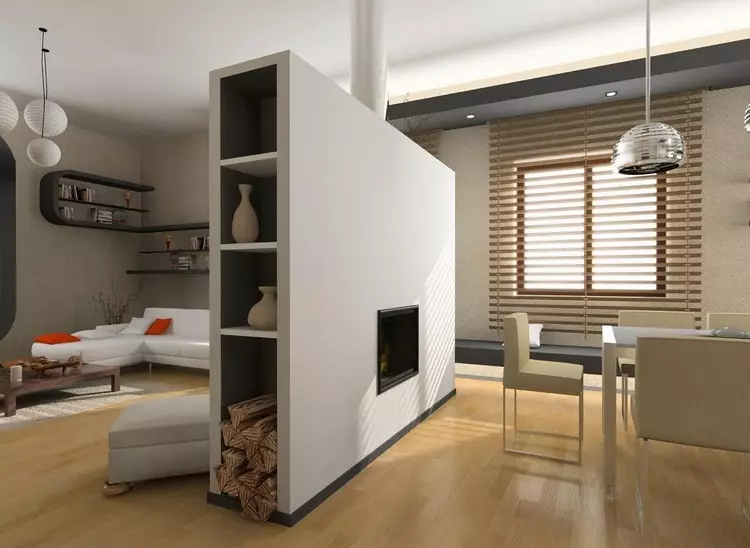
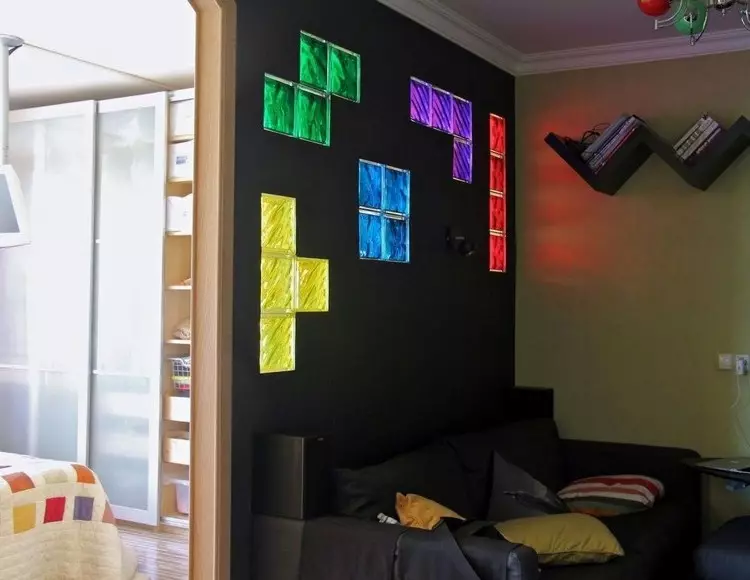
Each of the premises can be divided into zones, as well as do it entirely with all the premises.
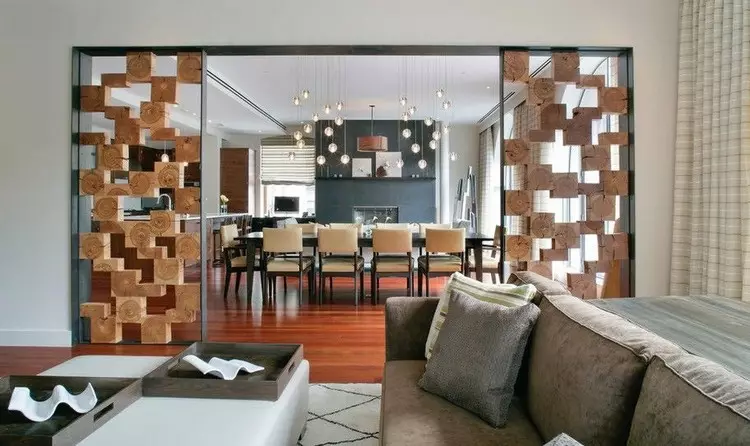
The living room can be separated from the rest of the premises using a partition or shirma. Another option is to separate the rack. He will emphasize the modern style and beauty of the interior.
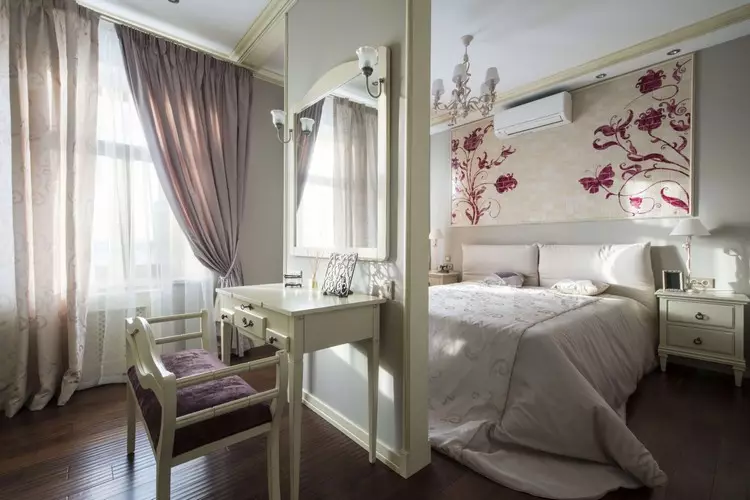
In the bedroom, it is quite often separated by the sleep zone and the working area near the table. It is best possible to do this with the help of a folding partition on wheels.
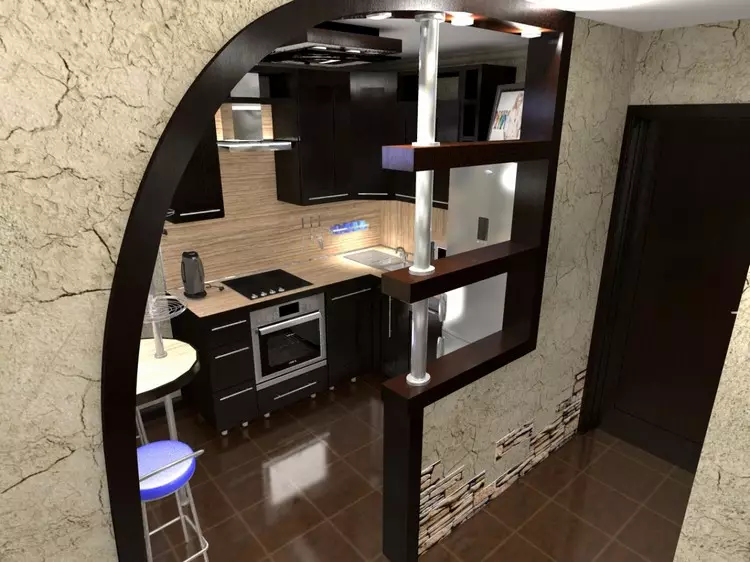
In the kitchen, there are often two zones: working and dining. They can be separated from each other by partition. What exactly will depend on the area of the kitchen and that you want to see.
Article on the topic: How to put a linoleum on the Fiberboard: Features
